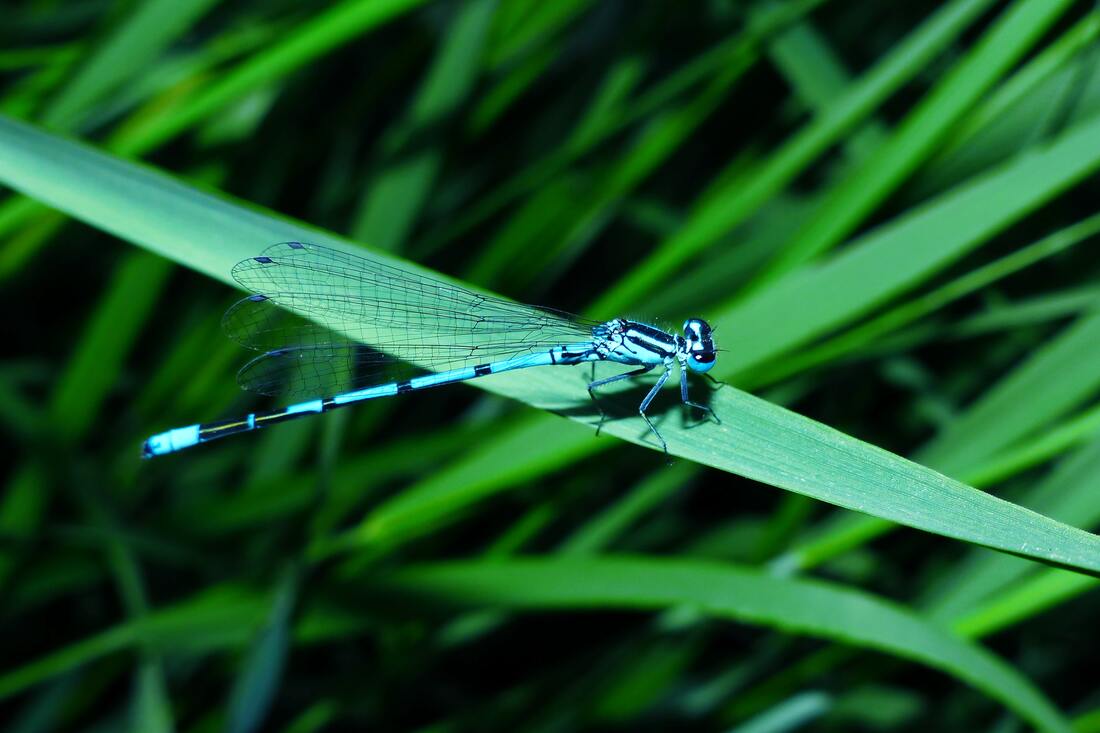|
Did you know that Ohio has a diverse population of dragonflies and damselflies? According to Ohio Department of Natural Resources, Ohio has approximately 164 recorded species. Their brilliant colors and striking markings make them very fun to watch. The immature stages of all species are aquatic, and these animals are found in lakes, rivers, ponds, and streams throughout Ohio. Although many dragonflies and damselflies are prevalent, 13 species in Ohio are listed as endangered. These amazing creatures are indicators of excellent water quality and serve as barometers of the health of our waterways.
The family Odonata, which includes both the dragonfly and damselfly, has an amazing life cycle. According to Ohio Department of Natural Resources, “adults live a few weeks to a few months. The adults exist to reproduce and serve as great predators of insects such as mosquitoes and flies.” “Mating dragonflies are referred to as being in tandem, and they couple together using specialized clamp-like structures. When transferring sperm, the pair assumes a ring-like position called the wheel position; somewhat suggestive of a valentine heart. Soon after mating, the adult female places her eggs into an appropriate substrate in a process called ovipositing. Depending upon the species, eggs might be deposited into water, saturated soil, on aquatic plants, or even drilled into plants or wet wood. From the eggs hatch larvae, which are sometimes called nymphs. These larvae are highly predatory, and are completely aquatic. In some species, larvae may take four years to reach the point of transformation into adults – far longer than the adult will live. When the larva is ready to transform to an adult, it crawls from the water and climbs onto adjacent plants. In an amazing metamorphosis, an adult dragonfly bursts from the shell of the larva.” It is easy to tell the two apart. Damselflies have slender wings held over their back when at rest while the dragonfly has broader wings held outstretched at rest. Both species can be seen throughout the summer months near unpolluted water bodies such as rivers, streams, lakes, marshes, swamps, bogs, fens, or even temporary rain-pools. Dragonflies and damselflies are among the only species that can fly in any direction (forward, backwards, and any other direction). These predators can change directions at lightning speeds to hunt for food – making them one of the most skillful aerial creatures. Warren County Soil and Water recognizes the importance of the Odonata species, that’s why we have adopted Dagmar the dragonfly as our new education mascot! Dagmar can be seen at local events throughout the County in the Summer of 2021! For more questions regarding Warren County Soil and Water Conservation District programs and/or technical assistance on water or soil questions, visit http://warrenswcd.com or call, 513-695-1337. Additional Resources:
1 Comment
|
Details
Warren County SWCD Staff BlogA blog to keep you informed on all the latest news at Warren County SWCD and in the conservation world. Archives
May 2024
Categories
All
|
|
|
Contact:PHONE: (513) 695 - 1337
EMAIL: [email protected] HOURS: Monday - Friday 7:30am - 4:00pm (except holidays) Connect:Warren County Soil & Water Conservation District Copyright © 2016
Warren SWCD Privacy Notice. Emails are serviced by Constant Contact. Constant Contact's Privacy Notice. |

